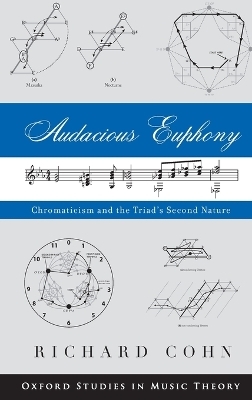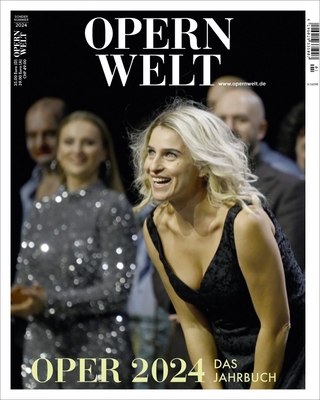
Audacious Euphony
Oxford University Press Inc (Verlag)
978-0-19-977269-8 (ISBN)
Richard Cohn is Battell Professor of Music Theory at Yale University. His work on chromatic harmony has been the topic of a series of summer seminars convened by the late John Clough, and has been developed in about a dozen doctoral dissertations, at Chicago, Indiana, Yale, Harvard, and SUNY-Buffalo. His articles have twice earned the Society for Music Theory's Outstanding Publication Award. Cohn edits the Oxford Studies in Music Theory series. In preparation is a general model of meter with applications for European, African, and African-diasporic music, and a co-edited collection on David Lewin's phenomenological writings.
Table of Contents ; 1. Mapping the Triadic Universe ; Three Methods for Calculating Triadic Distance ; Triads in Chromatic Space ; Remarks on Syntax and Maps ; 2. Hexatonic Cycles: A First Preliminary Model of Triadic Space ; A Minimal-Work Model of the Triadic Universe ; The Hexatonic Trance ; Contrary Motion and Balance ; Hexatonic Progressions, Tonnetz Representations, and Voice-Leading ; Transformations ; Near Evenness, Minimal Voice Leading, and the Central ; Role of the Augmented Triad ; Remarks on Dualism ; Triadic Structure Generates Pan-Triadic Syntax ; Triads are Homophonous Diamorphs ; 3. Reciprocity ; The Historical Emergence of Augmented Triads ; Consonance/Dissonance Reciprocity ; Two Early-Century Examples: Beethoven and Schubert ; Three Late-Century Examples: Liszt, Rimsky-Korsakov, Faure ; Reciprocity in Weitzmann's Der Ubermassige Dreiklang ; 4. Weitzmann Regions: A Second Preliminary Model of Triadic Space ; The Structure of a Weitzmann Region ; Weitzmann Transformations and N/R Cycles ; Remarks on the Tonnetz ; Historical Origins of Weitzmann Regions ; The Double-Agent Complex ; Expanded N/R Chains ; Weitzmann Regions without Sequences: Wagner and Strauss ; 5. A Unified Model of Pan-Triadic Space ; How Hexatonic and Weitzmann Regions Interact ; Chromatic Sequences ; Transformational Substitutions ; Voice Leading Zones ; Remarks on Disjunction and Entropy ; 6. Navigating the Triadic Universe: Three Scripts ; Neighborhoods and Pitch-Retention Loops ; Departure P Return Scripts ; Continuous Upshifts ; 7. Integrating Dissonant Harmonies into the Model ; Four Eighteenth-century Approaches to Dissonance ; Reduction to a Triadic Subset ; Hexatonic Poles in Parsifal ; The Tristan Genus as Nearly-Even Tetrachord ; Circumnavigating the Tristan-Genus Universe ; Scriabin's Mystic Species and Generalized Weitzmann Regions ; 8. Syntactic Interaction and the Convertible Tonnetz ; Some Previous Proposals ; The Diatonic Tonnetz ; Horizontal Extensions ; Vertical Extensions ; The Convertible Tonnetz ; Two Analytical Vignettes: Wagner and Brahms ; 9. Double Syntax and the Soft Revolution ; A Summary Example from Schubert ; Double Syntax and its Skeptics ; Code Switching and Double Determination ; Cognitive Opacity ; The Soft Revolution ; On Musical Overdetermination
| Erscheint lt. Verlag | 16.2.2012 |
|---|---|
| Reihe/Serie | Oxford Studies in Music Theory |
| Verlagsort | New York |
| Sprache | englisch |
| Maße | 236 x 163 mm |
| Gewicht | 522 g |
| Themenwelt | Kunst / Musik / Theater ► Musik ► Klassik / Oper / Musical |
| Kunst / Musik / Theater ► Musik ► Musiktheorie / Musiklehre | |
| ISBN-10 | 0-19-977269-X / 019977269X |
| ISBN-13 | 978-0-19-977269-8 / 9780199772698 |
| Zustand | Neuware |
| Informationen gemäß Produktsicherheitsverordnung (GPSR) | |
| Haben Sie eine Frage zum Produkt? |
aus dem Bereich


